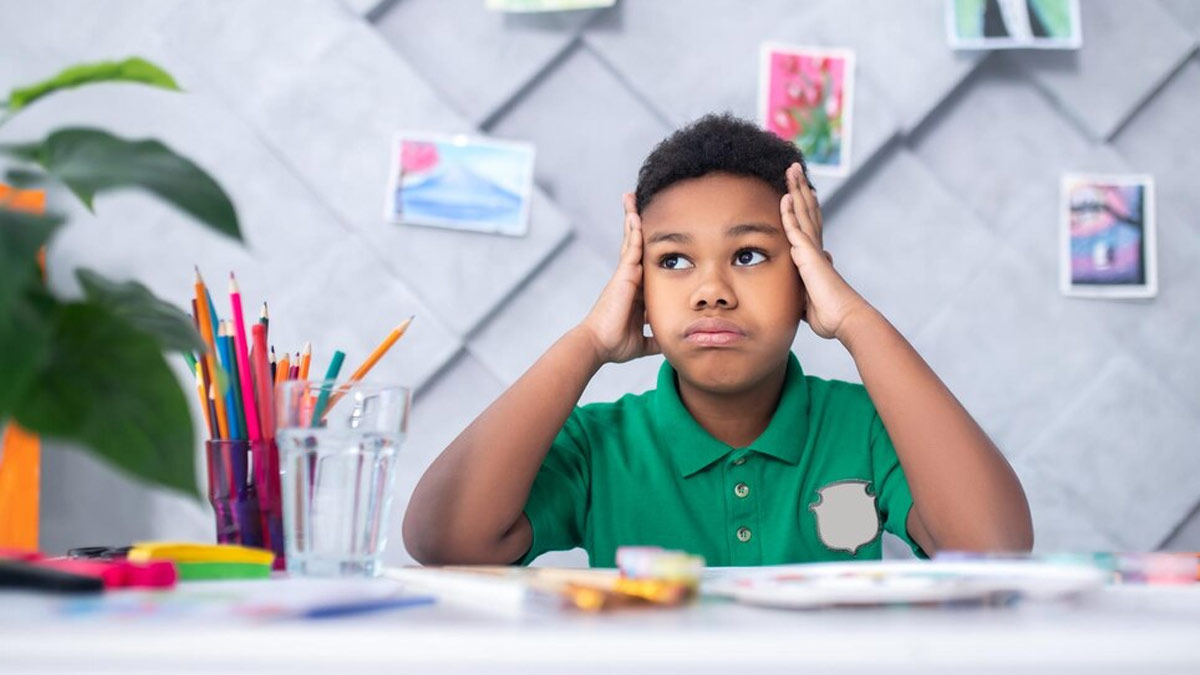
Obsessive Compulsive Disorder (OCD) is a mental health condition that is often associated with repetitive behaviours and recurring thoughts, feelings, and sensations. We often use the term to address anyone who is either a neat freak or those who can't help but organise their belongings all the time. While you may think that OCD occurs mostly in adults, the truth is that its symptoms usually start between late childhood and young adulthood, according to the National Institute of Mental Health (NIMH).
Table of Content:-
OCD In Children![]()
In an interaction with the OnlyMyHealth team, Dr Sushma Gopalan, Child Psychologist, Aster CMI Hospital, Bengaluru, said, "Children can definitely be diagnosed with obsessive-compulsive disorder (OCD)."
Research suggests that the prevalence of OCD in children is estimated to be between 1% and 2.3%. This is similar to the prevalence rate for adults, which is between 1.9% and 3.3%. A meta-analysis of 16 studies, with follow-ups ranging from 1 to 15.6 years, found that 41% of children diagnosed with OCD continued to have full OCD into adulthood, while 60% had either full or subthreshold OCD.
Also Read: #MentalHealthMatters: What Is Obsessive Compulsive Disorder, Explained By Psychologist
Factors that increased the likelihood of persistence included an earlier onset of OCD, the need for inpatient care, longer disease duration, comorbid psychiatric conditions, and poor response to initial treatment, as per the study findings.
Dr Gopalan highlights the importance of timely identification and intervention, as recognising the symptoms in younger children can help in implementing more effective management and support strategies that are tailored to their developmental needs.
Signs Of OCD In Children![]()
If you suspect or are not aware of OCD warning signs in children, Dr Gopalan recommends watching out for symptoms like persistent, intrusive thoughts causing significant anxiety, leading the child to engage in repetitive behaviours or rituals to alleviate distress.
“Children with OCD may show excessive worry about contamination, harm, or the need for things to be arranged in a specific order. They might also avoid situations or objects that trigger their obsessions. Additionally, a noticeable increase in time spent on compulsive rituals that interfere with daily activities, such as schoolwork or social interactions, is another critical sign for parents to monitor,” the doctor adds, reiterating the importance of recognising symptoms early as it can help in providing timely support and treatment.
How Is OCD Diagnosed In Children?
OCD diagnosis in children requires a comprehensive evaluation by doctors. It will involve assessment of the child's symptoms, behaviours, and family history.
Parents who suspect that their child may be experiencing OCD should first observe and document specific behaviours that raise concern, especially compulsive actions that interfere with daily life. And then they should seek guidance from a child psychologist, who can provide a thorough assessment and recommend appropriate interventions.
Also Read: Effective Ways To Manage Obsessive Compulsive Disorder (OCD)
Treatment Options For Children With OCD![]()
According to Dr Gopalan, it poses a significant question about how it progresses with treatment. She explained, “It's important for parents and caregivers to understand the potential outcomes of childhood OCD because effective interventions can greatly improve a child's quality of life. Some children may see a reduction in symptoms or even remission with the right treatments, while others may find that the disorder continues, requiring ongoing management and support as they move into adulthood.”
If a child is diagnosed with OCD, treatment options include various therapeutic approaches, such as cognitive-behavioural therapy (CBT), particularly exposure and response prevention (ERP), which has been highly effective in reducing OCD symptoms, the doctor said.
She concluded that pharmacological treatments, like selective serotonin reuptake inhibitors (SSRIs), are often prescribed to help manage the condition.
Combining these therapies can improve outcomes, though success depends on factors like the severity of symptoms and the child’s response to treatment, Dr Gopalan concluded.
Also watch this video
Read Next
Can Eating Too Much Oats And Bananas Lead to Type 1 Diabetes In Children? Expert Debunks The Myth
How we keep this article up to date:
We work with experts and keep a close eye on the latest in health and wellness. Whenever there is a new research or helpful information, we update our articles with accurate and useful advice.
Current Version


